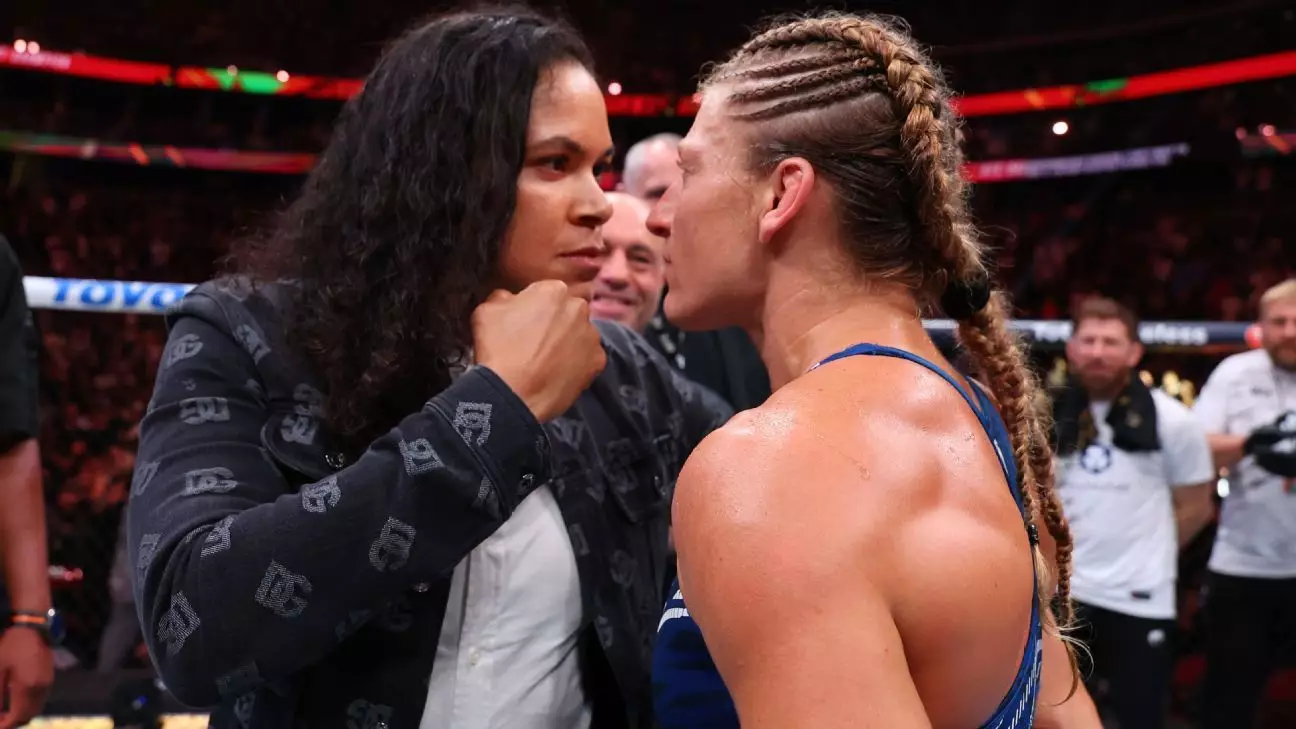As the UFC continues to unveil high-profile bouts, it becomes glaringly evident that the promotion’s true potential lies not just in announced fights, but in fleeting, speculative matchups that spark fan imagination. While headline fights like Chimaev versus Du Plessis, and Gane versus Aspinall promise excitement, there’s a certain magic in the fights we *dream* about—those battles that could shake up divisions, create new narratives, and captivate the sport’s global audience. But more than just wishful thinking, these matchups highlight critical gaps or opportunities the UFC could capitalize on before the year’s end.
It’s easy to get caught up in the hype of title defenses or rematches, but the real intrigue lies in fights that challenge fighters differently or elevate rising stars to superstardom. Strategic matchmaking isn’t just about the immediate payoff; it’s about shaping the sport’s future. Some fights, like a hypothetical showdown between bantamweight legend Holly Holm and the emerging star, might seem unlikely, yet they have the potential to redefine divisions if executed at the right moment.
UFC’s Hidden Gems: Elevating New Stars with High-Impact Fights
The UFC’s ability to promote lesser-known fighters effectively can be the difference between a niche sport and a mainstream sensation. For instance, Della Maddalena’s potential clash with Makhachev isn’t just a promotional tactic—it’s a strategic move to introduce a promising, physical Australian to a broader audience. If Madison Square Garden gets wind of this matchup, it could be a turning point for Maddalena’s career, showcasing his skill against a top-tier opponent in a globally recognized arena.
Similarly, the possibility of Khamzat Chimaev making a quick leap into a title shot—regardless of the outcome—could have ripple effects for the sport’s narrative. His meteoric rise, combined with a potential upset win or a sudden title shot against an exhausted Adesanya, could dramatically change the fighters’ trajectories and bring fans to the edge of their seats.
This is where strategic matchmaking shows its true power: the ability to craft fights that boost emerging talent, inject excitement into stagnant divisions, and expand the sport’s reach. But betting solely on star power without a clear plan risks watering down narratives or diluting the weight of titles.
Resurrecting Rivalries and Creating New Antics: The Top of the Wish List
Some of the most compelling fights are rooted in history, grudges, or unresolved rivalries. The anticipated bout between Amanda Nunes and Cris Cyborg’s successor in the bantamweight division could be a defining moment, especially if it’s built around the long-standing history between Nunes and Holly Holm, or the storyline of Nunes seeking redemption after rare losses. Such fights don’t just draw attention—they elevate the fighters’ legacies and provide closure or new chapters for fans invested over years.
Another matchup that could shake the sport’s fabric is a rematch between Sean O’Malley and Cody Garbrandt. Their shared history, hype, and contrasting styles could ignite a spectacle that’s more about entertainment and storytelling than rankings. It’s a matchup that fulfills the public’s desire for drama and brings back a vintage rivalry that once seemed destined.
Strategic Moves for the Future: Why Timing and Promotion Matter
Timing is everything in MMA, and the UFC’s scheduling can make or break a fight’s impact. The idea of booking Alex Pereira versus Israel Adesanya for a fourth showdown hinges upon strategic promotion, building anticipation, and maximizing pay-per-view sales. But the UFC must balance this with the need for fresh matchups that spark genuine interest.
One could argue that some fights make more sense as marquee main events at specific venues or during particular months. The UFC’s history of hosting blockbuster fights in November and December isn’t coincidental; these months are ripe for holiday-season hype, boosting pay-per-view sales and attendance. The UFC’s willingness to promote underdog stories or sudden title fights at these times can result in legendary moments.
In the case of fighters like Pico, who was expected to make a splash earlier in the season, the delay could serve as a nostalgia trip if properly executed later in the year. Instead of settling into predictable rematches or overlooked prospects, the UFC should strategically use these hiatuses to create star-making opportunities with top prospects, cross-division clashes, or sudden title opportunities for fighters riding momentum.
Ultimately, the UFC’s most exciting prospects aren’t just the fights announced weeks in advance; they are the ones only whispered about in forums or teased through social media. These speculative matchups have the potential to reshape divisions, introduce fresh rivalries, and excite fans in ways that mundane title defenses cannot. If the promotion can harness this power—by creatively booking fights that are not just about rankings but about storytelling and legacy—the sport will find itself at a crossroads where every fight feels like an event rather than just a result.
The end of the year isn’t just about consolidating champions; it’s about crafting moments that will be remembered for generations. The question is whether the UFC will act boldly enough to seize these opportunities or fall into the trap of predictable matchmaking, missing the chance to truly elevate MMA’s global appeal.


Leave a Reply